Raise a glass to the bagnum, the plastic wine pouch that’s made cask wine cool again
There’s a growing thirst for wine in alternative packaging, from pouches and cans to the new-school goon bag.
A new wave of innovative packaging is making wine more accessible, portable, cheaper, and ultimately, more sustainable.
Topping the list is the bagnum, a 1.5-litre bag of wine that is proving a hit at the bottle shop.
The large pouch, generally made from laminated polymer material lined with aluminum to keep the wine fresh, is light but tough enough to stand upright. Holes at the top act as the handle, and the equivalent of two bottles of wine (a magnum) are dispensed through a tap at the bottom. Essentially, it’s cask wine without the box.
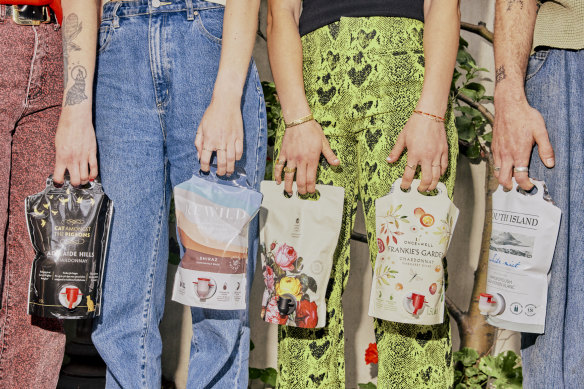
“The first time I heard about it, I thought, ‘This is brilliant. I can’t believe somebody has come up with the word bagnum’,” says Andrew Shedden, head of fine wine at Endeavour Group, which owns the Dan Murphy’s brand. “That’s literally what it is: a magnum in a bag.”
The bags have a 12-month shelf-life, and last four weeks after opening. Although not readily recyclable, when analysed against single-use glass, they have a lower carbon footprint.
The bagnum format hit retailer Dan Murphy’s in 2022 and has increased in popularity ever since. “This year to date, we are 150 per cent up on bagnum sales year-on-year,” Shedden says.
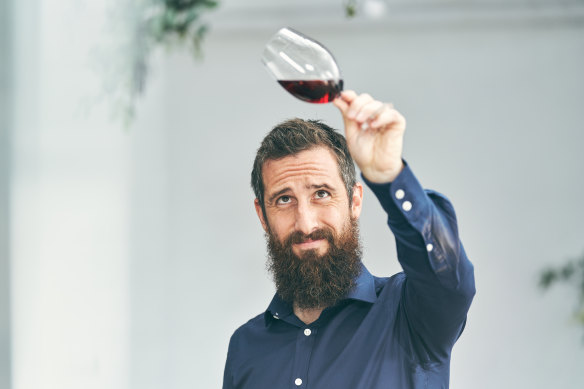
Initially, he predicted the format would appeal most to traditional cask wine buyers. Instead, the main buyers are bottled wine drinkers. “When we look at their profile, the customer who buys into bagnums as a concept spends slightly more on wine. They’ve already rusted on to this format.”
Shareability is part of the appeal. “If you’re out and about with a group of friends, you know the 1.5-litre format is a far more appropriate share quantity. It goes further and plays the same role as magnums at a party or a small to medium gathering.”
Portability also makes bagnums a popular choice for picnics, camping and outdoor shindigs. Frugality plays its part, too.
“We’ve tested them, and they stay fresh for up to 30 days after you open them,” Shedden says. “It means that if you don’t want to open a 750ml bottle tonight when you’re by yourself and only want one glass, you can do that with this format.”
‘The two things fuelling growth in the last six months are bagnums and alternative packaging.’Andrew Shedden, head of fine wine at Endeavour Group
Dan Murphy’s shelves stock wines from 11 producers, including Squealing Pig, Wolf Blass, Churchill Estate, Cupio, and Vino Verse. White wines are the most popular, with pinot gris, sauvignon blanc and chardonnay leading the charge. Reds, pinot noir and shiraz in particular, make up just under a third of sales. And rosé brings up the rear, possibly because colour plays such an important role in its shelf appeal.
“At the moment, they’re more mainstream brands, so we’re looking for opportunities to expand that to different varieties or expand into more premium products,” Shedden says. “The only thing that’s held us back so far is the minimum order quantities on this technology to actually get things bagged. We’re working on how to reduce the minimum order quantities so that we can do more boutique or niche drinks.”
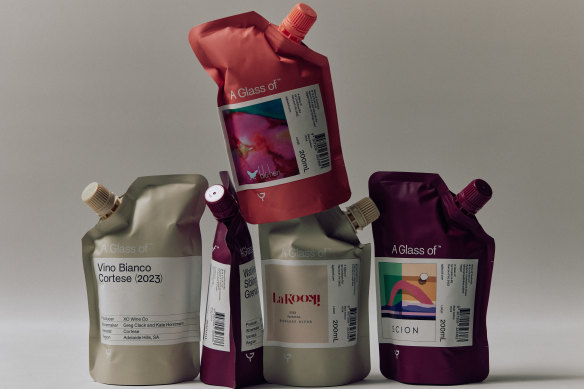
Wine-in-a-pouch delivery service A Glass of is supplying the niche market, engaging renowned sommeliers, including former Quay head somm Shanteh Wale, to curate collections of five Australian wines packaged in 200ml pouches.
“A Glass of has targeted some seriously impressive, quite high-end Australian producers and I think a smaller format definitely plays into that,” Shedden says. “These play into moderation and that ‘just one’ occasion beautifully. If it lands on the shelf at $8.99 a pouch for 200ml, you’re talking about a pretty sizable glass of wine for nine bucks.”
Shedden hopes to see more boutique wines available in bagnum format in the next 12 to 18 months. “At Endeavour, the two things fuelling growth in the last six months are bagnums and alternative packaging.”
Wine in a can is another growth area. Canned still wines haven’t taken off, but spritzers are catching on. “Three people at my four-year-old’s birthday party on the weekend brought different forms of wine spritzer,” Shedden says. “I thought that was fascinating. We’ve been banging on for a while about innovation in wine and certainly in terms of our results, the only things driving growth are the people who are innovating.”
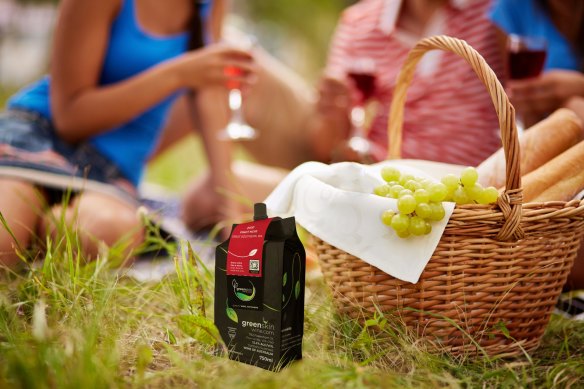
Six forms of alt packaging to try
Wine in a pouch
There’s much to love about single-serve wine in a squishy, recyclable pouch, especially if you like a beverage at the end of a long walk. Chuck it in your backpack and you’re good to go.
Try top-notch wine from A Glass of in 200ml recyclable, BPA-free pouches ($47/five-pack, aglassof.com). Or, try Greenskin Wine, premium Western Australian-grown wine in fully recyclable 750ml pouches. From $106.50/six, greenskinwine.com.
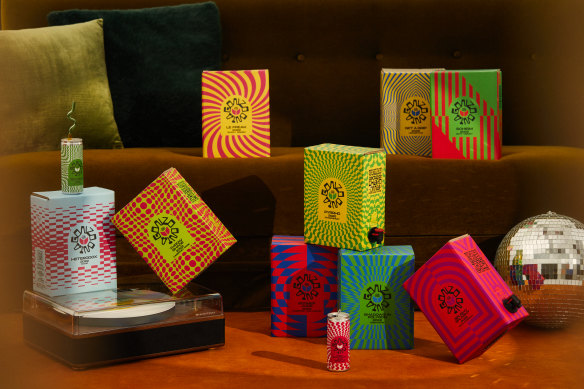
Bag in a box
Cask wine, aka “goon”, is often considered second-class booze but Victoria’s Gonzo Vino challenges that view. In 2020, sommelier Marcus Radny “reinvented the wine pillow” when he found himself with excess quality pinot noir and banged it in a box. Now, Gonzo has a changing line-up of utterly quaffable wines (sourced from vineyards across Australia) in psychedelic packaging. $66/3 litres, gonzovino.com.
Cult Cru Wine Company launched in February with six varieties. They strive for sustainable production, using cardboard boxes made from 72 per cent recycled materials, and are working on a bag return process in partnership with Sustainable Infrastructure Systems. $39.99/2 litres, cultcru.com.au.
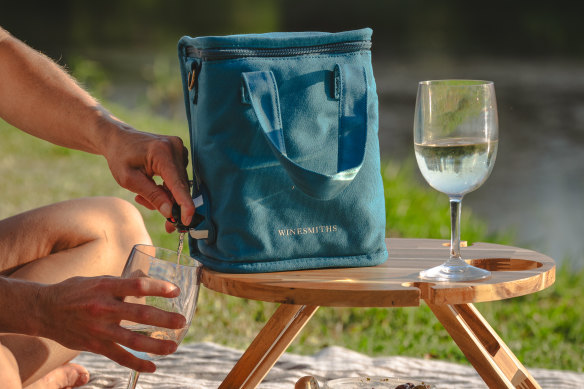
Wine in a cooler bag
Wine-on-tap producer Winesmiths has collaborated with Australian lifestyle bag brand Pelli to create an insulated bag to carry their two-litre premium casks. Chill the wine and pop it in the bag, pulling the tap through the opening. Add an ice brick to keep the wine cool for hours. The bag is made from recycled materials, plant-based insulation and biodegradable materials. $59.95/reusable bag, $15.99/2-litre cask, smithswinestore.com.au/winesmiths/pellibag/.
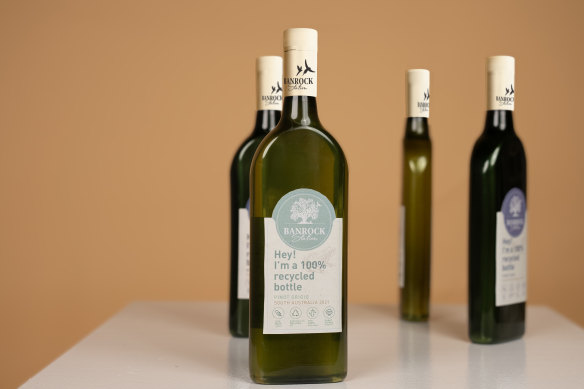
EcoBottles
They look weird, but there’s purpose behind the flat EcoBottles made in Victoria by Visy using 100 per cent recycled PET. The unbreakable 750ml bottles are shaped like flasks and are about the width of a novel. Brands such as Banrock Station and Taylors have been on this bandwagon for a couple of years. From $10/bottle at Liquorland and First Choice Liquor.
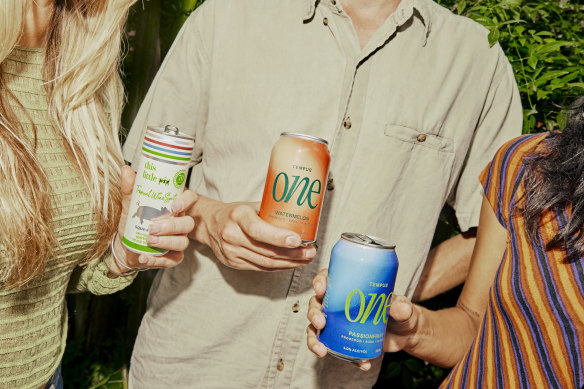
Wine in a can
For friendly fizz, try the Tread Softly Prosecco in a can. For every case sold, the brand commits to planting an Australian native tree. Find them on special for $10/four-pack at BWS, or $156/case at fourthwavewine.com.au.
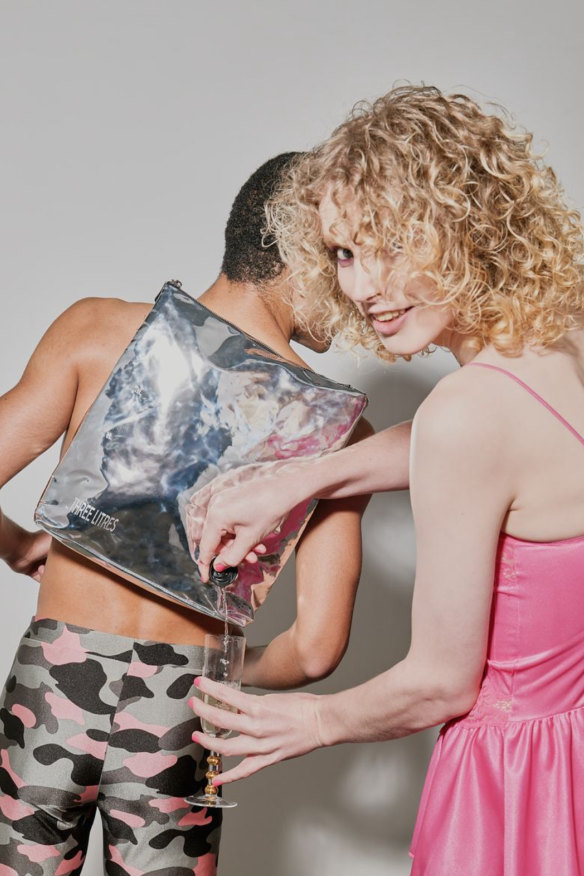
Wine you can wear
For the ultimate kitsch factor, Melbourne-based accessory company _Three Litres creates backpacks and bumbags that resemble silver goon bags. The best bit? You can insert a wine- (or water-) filled bladder. They don’t come cheap, but they are utterly head-turning. From $145/purse to $380/backpack, threelitres.com.
The best recipes from Australia's leading chefs straight to your inbox.
Sign up